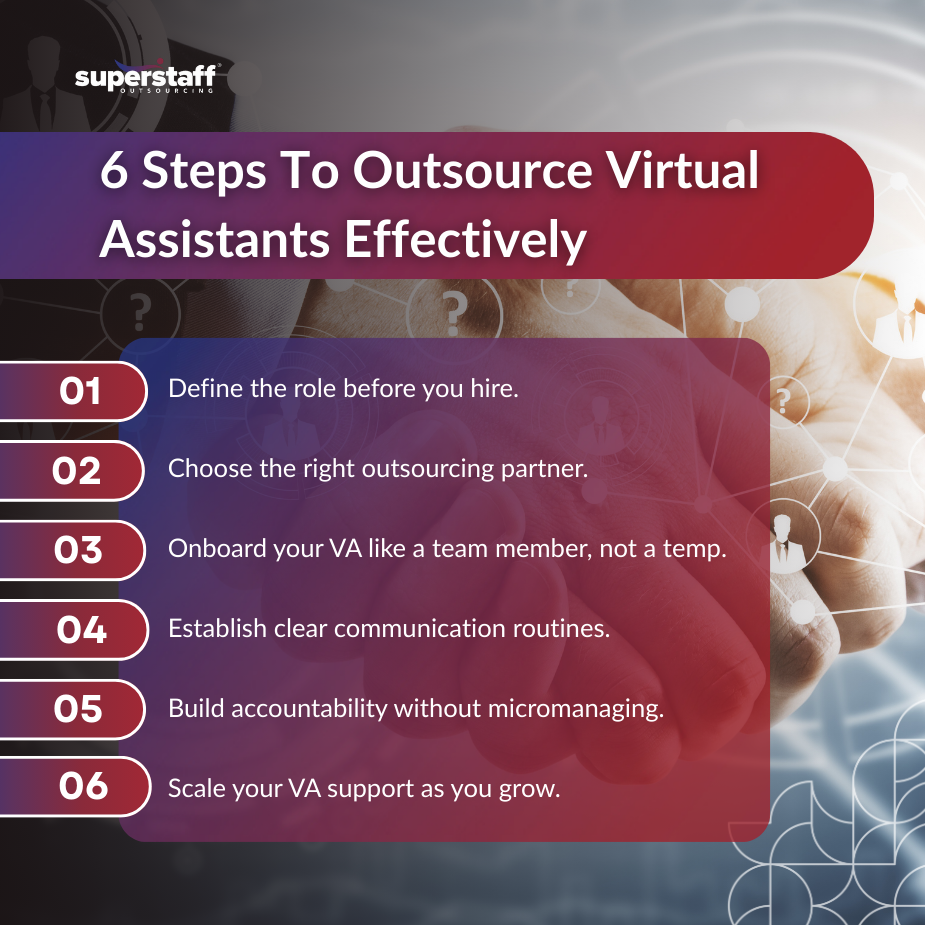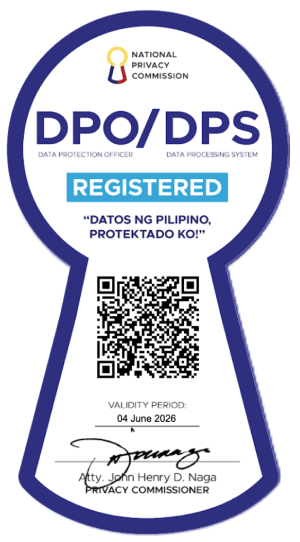
Outsourcing a virtual assistant can supercharge your productivity—or turn into a time-draining misfire. The difference comes down to one critical factor: collaboration. When done right, the decision to outsource virtual assistants can help you reclaim hours, streamline operations, and keep projects moving forward without a hitch.
Today’s virtual assistants aren’t limited to inbox cleanup or scheduling calls. Businesses now trust them with core responsibilities like project coordination, customer support, research, and even specialized tasks like social media management or bookkeeping. But here’s the catch: hiring a VA is only half the equation. How you integrate them into your workflows and maintain clear, consistent communication is what truly determines success.
In this blog, we’ll uncover the secrets to building smooth, effective partnerships with outsourced VAs—from setting expectations during onboarding to fostering ongoing collaboration that eliminates friction, delays, and misunderstandings. You’ll learn how to hire a virtual assistant for smooth team collaboration and get the full value of your investment without communication gaps or operational hiccups.
Define the Role Before You Hire
Successful collaboration starts before the VA even comes on board—with a crystal-clear role definition. Too often, businesses bring in a virtual assistant without a specific game plan, hoping they’ll “figure it out” along the way. The result? Misaligned expectations, unmet goals, and unnecessary frustration.
Why Role Definition Matters
A vague job description makes it impossible for your virtual assistant to know where to focus their time. Without clarity, they may duplicate efforts, miss deadlines, or prioritize the wrong tasks. By defining the role upfront, you create a roadmap that both you and your VA can follow with confidence.
Key Steps to Define the Role
- List out specific tasks – Be explicit about what you expect: administrative support, lead generation, calendar management, social media scheduling, bookkeeping, or customer service outsourcing in the Philippines for e-commerce brands.
- Identify required tools or platforms – Will they need to work with CRMs like HubSpot, project management tools like Trello, or communication apps like Slack?
- Define work hours, availability, and responsiveness expectations – Decide if they’ll work during your local hours, overlap for part of the day, or work asynchronously.
- Clarify reporting structure and performance metrics – Who will they report to? How will you measure success—through completed tasks, response times, or customer satisfaction scores?
Once the role is clearly defined, the next step is finding the right VA for the job.

Choose the Right Outsourcing Partner
To outsource virtual assistants effectively, it’s crucial to hire through a reputable outsourcing provider. Properly vetting your provider ensures skill match, reliability, and ongoing support. While freelance marketplaces can be tempting for quick hires, they don’t always offer the quality control, data security, or long-term stability you need for smooth collaboration.
Why Work with a Provider Like SuperStaff?
- Pre-screened and trained VAs – You get access to talent that’s already vetted for skills, communication ability, and professionalism.
- Professional onboarding and documentation – No need to start from scratch; processes are in place to integrate your VA quickly.
- Data security and compliance standards – Especially critical when VAs handle sensitive data like customer information or financial records.
- Built-in backup systems – If your VA is unavailable, a replacement can step in to ensure work continuity.
- Dedicated client support and performance monitoring – You’re never on your own when challenges arise.
Working with an outsourcing partner not only helps you outsource virtual assistants effectively but also sets the foundation for scalable virtual assistant services as your needs evolve.
Now that you’ve found the right VA, it’s time to set the stage for collaboration.
Onboard Your VA Like a Team Member, Not a Temp
A strong onboarding process sets the tone for a long-term, high-trust relationship. Even the most skilled VA can underperform if they’re not properly introduced to your team, tools, and workflows.
Best Practices for Onboarding Your VA
- Welcome email and team introduction – Make them feel like a valued member from day one.
- Company overview and SOPs – Share your mission, brand values, and documented processes to align their work with your standards.
- Tech access and workflow walkthrough – Ensure they have the logins, permissions, and training to use your systems effectively.
- Communication preferences – Establish expectations for response times, meeting schedules, and preferred platforms.
- Initial training and early wins – Assign manageable tasks early to build confidence and rapport.
Treat your VA as a partner in your business rather than a temporary helper. This approach promotes loyalty, better work quality, and smoother collaboration.
Ongoing communication will make or break the relationship.
Establish Clear Communication Routines
Misunderstandings derail remote collaboration—but they’re easy to avoid with clear communication norms. Consistency is key to keeping projects on track and ensuring everyone feels connected.
Communication Tips for VA Collaboration
- Daily or weekly check-ins – Use video calls or chat to align priorities and address issues quickly.
- Use project management tools – Platforms like Asana, ClickUp, or Notion keep tasks organized and transparent.
- Structured reporting – Ask for end-of-day or end-of-week summaries to stay updated without micromanaging.
- Encourage feedback loops – Create a safe space for your VA to suggest process improvements.
- Respect time zones and cultural nuances – If you’re doing customer service outsourcing in the Philippines, understanding cultural etiquette can enhance collaboration.
Clear communication routines not only prevent problems but also strengthen trust between you and your VA.
Besides communication, accountability and trust are key.
Build Accountability Without Micromanaging
The best VA partnerships are built on autonomy and results—not constant check-ins. Micromanagement drains productivity and signals a lack of trust, which can demotivate even the most capable assistant.
Balancing Oversight and Empowerment
- Set SMART goals and KPIs – Make objectives Specific, Measurable, Achievable, Relevant, and Time-bound.
- Track progress with dashboards or reports – Use tools to monitor performance without daily interruptions.
- Offer praise and constructive feedback regularly – Recognition fosters engagement, while feedback drives improvement.
- Provide opportunities for skills development – Invest in training to expand your VA’s capabilities over time.
- Trust but verify – Give autonomy but review results to ensure quality and consistency.
When you outsource virtual assistants, building a results-focused relationship encourages them to take initiative while staying aligned with your business goals.
A well-managed VA relationship also scales beautifully with your business.
Scale Your VA Support as You Grow
Outsourced virtual assistants aren’t just short-term helpers—they can grow alongside your business. Starting with one VA can eventually evolve into a dedicated virtual support team.
How to Scale VA Support
- Gradually increase responsibilities – As trust builds, delegate more complex or strategic tasks.
- Delegate new areas – Expand into roles like social media management, bookkeeping, or expanded customer service outsourcing in the Philippines for global markets.
- Free up in-house staff for strategic work – Use VAs to handle repetitive tasks so your core team can focus on growth initiatives.
- Work with a provider like SuperStaff – Easily add more virtual assistant services without restarting the hiring process.
Scaling your VA support is about creating a flexible, resilient workforce that can adapt to your changing needs.
Let’s recap the essential elements of successful VA collaboration.
Outsource Virtual Assistants With Confidence. Partner With SuperStaff.
Outsourcing virtual assistants works best when approached as a real partnership—with clear expectations, open communication, and the right support systems. The process begins with defining the role, choosing a trusted outsourcing partner, and onboarding intentionally. It continues with establishing communication routines, fostering accountability without micromanaging, and scaling strategically as your business grows.
If you’re ready to reclaim your time and streamline your operations, the next step is simple: outsource virtual assistants through a provider you can trust. SuperStaff’s professionally trained virtual assistants are equipped to integrate seamlessly into your workflows and deliver consistent, high-quality results.
Ready to delegate with confidence? Contact SuperStaff to learn how our virtual assistant services can help you build smooth, effective collaborations—without the friction, delays, or miscommunication.






